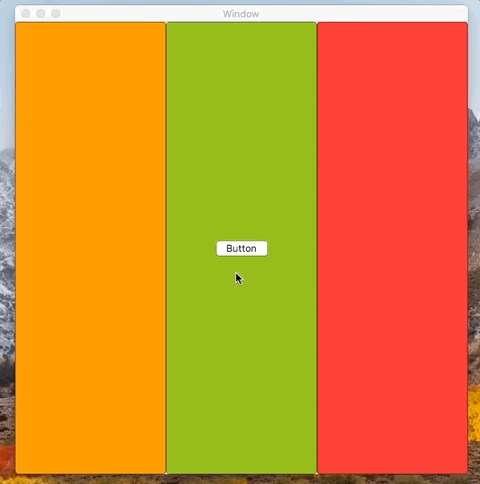I working with swift 4 for macOS and I would like to hide an stack view item with animation.
I tried this:
class ViewController: NSViewController {
@IBOutlet weak var box: NSBox!
@IBOutlet weak var stack: NSStackView!
var x = 0
@IBAction func action(_ sender: Any) {
if x == 0 {
NSAnimationContext.runAnimationGroup({context in
context.duration = 0.25
context.allowsImplicitAnimation = true
self.stack.arrangedSubviews.last!.isHidden = true
self.view.layoutSubtreeIfNeeded()
x = 1
}, completionHandler: nil)
} else {
NSAnimationContext.runAnimationGroup({context in
context.duration = 0.25
context.allowsImplicitAnimation = true
self.stack.arrangedSubviews.last!.isHidden = false
self.view.layoutSubtreeIfNeeded()
x = 0
}, completionHandler: nil)
}
}
}
The result will be:
It works! But I am not happy with the animation style. My wish is:
- I press the button, the red view will be smaller to the right side
- I press the button, the red view will be larger to the left side.
Like a sidebar or if you have an splitview controller and you will do splitviewItem.animator().isCollapsed = true
this animation of show/hide is perfect. Is this wish possible?
UPDATE
self.stack.arrangedSubviews.last!.animator().frame = NSZeroRect
UPDATE 2
self.stack.arrangedSubviews.last!.animator().frame = NSRect(x: self.stack.arrangedSubviews.last!.frame.origin.x, y: self.stack.arrangedSubviews.last!.frame.origin.y, width: 0, height: self.stack.arrangedSubviews.last!.frame.size.height)






I just create a simple testing code which can animate the red view, instead of using button, I just used touchup, please have a look at the code: